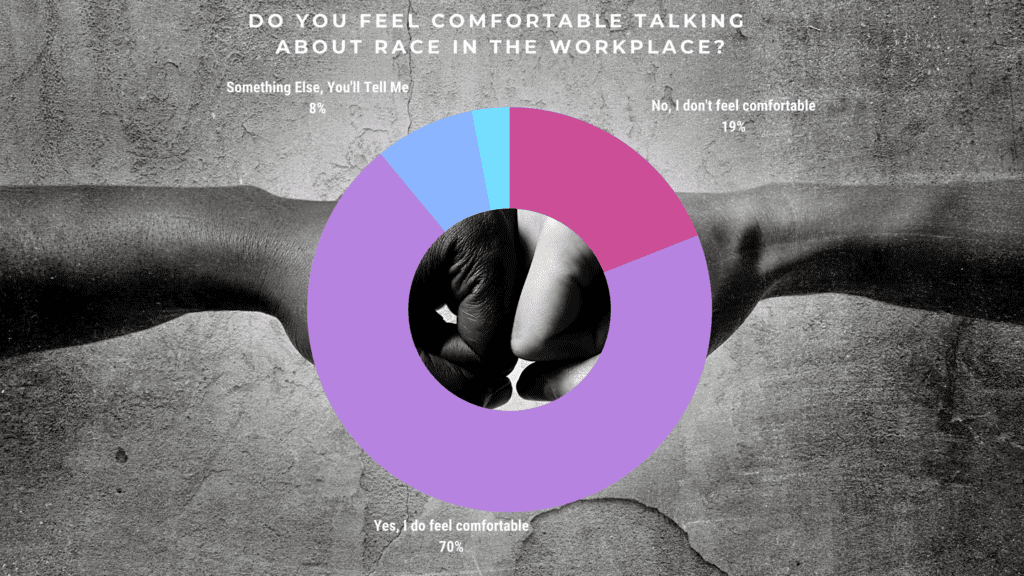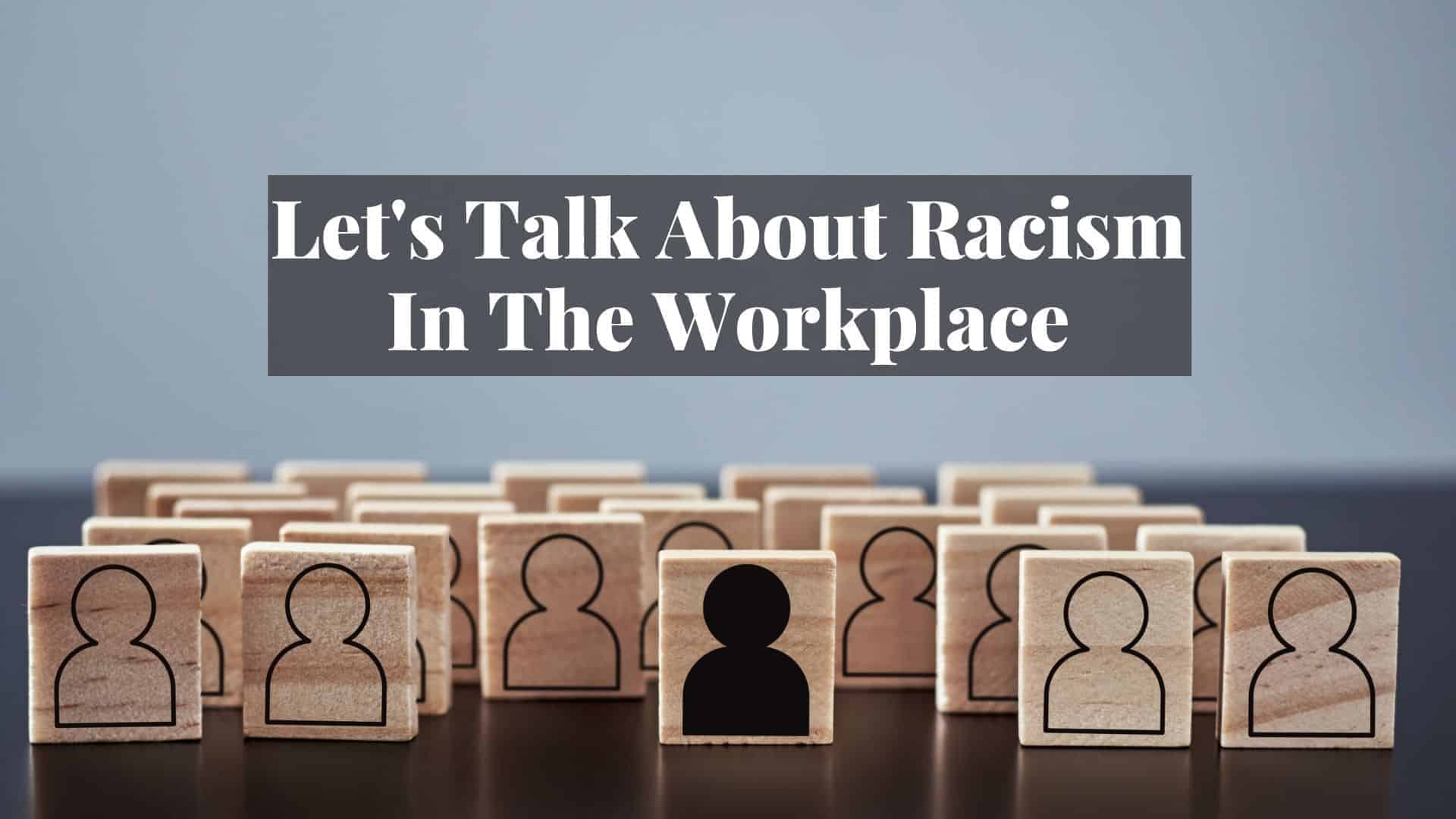The topic about racial discrimination still poses a challenge in organizational workplaces to date. Studies have shown the devastating health and economic consequences of racism and its damaging impacts on a country’s social cohesion.
Talking about racism can be difficult. When it comes down to speaking about racism and race, organizations have been known to not discuss it until they are faced with an incident within the organization, for example, a slanderous comment made by one person to another.
Disclosure: This post contains affiliate links. If you click through and make a purchase, I’ll earn a commission, at no additional cost to you.
Listen the audio version of this article
This reluctance is echoed through the organization, and its impacts are often seen with middle managers too. From dancing around serious conversations to straight-up avoiding any talks about race, managers in these organizations aren’t equipped to have an honest conversation around race or what to do when topics around diversity, equity, and inclusion (DEI) need to be discussed. As a result, DEI initiatives, plans, and approaches often sit within certain groups with a DEI focus or within the C-suite executives, and never truly get integrated within the culture of an organization.
With an increased focus on improving the quality of workplaces in recent years, DEI topics have taken a greater center stage in many companies, as improving DEI metrics have shown to improve employee engagement. As such, companies have put more focus on talking about DEI topics, including racism in the workplace. To eradicate any taboo or systemic barriers built around conversations of racism, leaders should inspire managers and employees within an organization to have productive conversations amongst themselves to improve the culture of a workplace.
A RACE Framework for Employees
Professor Stephanie Creary offers a framework for middle managers to guide them through initiating conversations about race in the workplace. After all, DEI frameworks should not only be created and tailored to executives when the impact of DEI concerns affects the entire organization. In her framework, Professor Creary details the acronym RACE as the following:
R – Reduce anxiety by talking about race anyway.
A – Accept that anything related to race is either going to be visible or invisible.
C – Call on internal and external allies for help.
E – Expect that you will need to provide some “answers,” practical tools, skill-based frameworks, etc.

LinkedIn Survey Outcome
In a recent survey I’ve done on LinkedIn to understand how employees, ranging from C-suite to middle managers, in a varied number of industries felt about talking about race, a significant number felt comfortable talking about race in the workplace. It was interesting to note that about 1 out of 4 felt somewhat uncomfortable talking about race at the workplace. In comments received by survey participants, some commented that while they were comfortable speaking about race at the workplace, they were only comfortable at speaking about topics related to racism that was more widely spoken about and addressed, like systemic racism, compared to one-on-one conversations about racial biases.

Another survey participant stated that the discomfort of speaking about race at the workplace stems from being seen as too “emotional” and that she is selective about who and when she shares the conversation with. A senior manager who commented stated that due to race being brought up in an accusing manner towards white employees at the workplace, it has caused her to rely on engaging with conversations about race to only a limited few.
It needs to be acknowledged that it is a step in the right direction for organizations to review and add DEI policies into a company’s overall policies, there indeed is much work to do to unlearn any form of negative connotation or fears attached to conversing about race and work toward creating a constructive and safe space to have such conversations in the workplace, without blaming a group of people or victimizing another.
Such frameworks, as written by Professor Creary, can help in guiding these conversations to create more safe spaces to discuss topics relating to race and other previously labeled “taboo” topics in the DEI umbrella, to build a more cohesive and inclusive workforce.
Improving the Workplace
While organizations can provide thought-provoking frameworks and tools to help employees with There’s much work to do on a personal level, too. Reflecting on our habits and preconceived notions of others at work is something we must do regularly to ensure that we can contribute to an inclusive and thriving workplace. We need to personally challenge preconceived notions we have built around the race of our colleagues and interact with them with an open mind, to really listen to their ideas and recognize their contribution. This will in turn build a more engaged workplace, which will improve any performance metrics that the company sets out to achieve.
A sensitive and mature approach to discussing racism strengthens organizational culture and makes an organization better prepared to handle racist incidents if or when they happen. For the development of more advanced racial awareness in your organization, there are many approaches that can be used, including engaging with a facilitator to run a workshop, town halls, and regular email communications from senior leaders. The more engaging the sessions, the more effective the outcome will likely be in encouraging a discussion and improving workplace outcomes.
Move the DEI Needle
Another way to engage employees in your company is through a virtual DEI conference, which, like a workshop, covers the key concepts and trends with a high level of engagement. Plus, there is also an added advantage of networking with experts and keynote speakers in the field. This can provide answers to questions pertaining to DEI matters in an effective and collaborative manner, fostering further engagement and inclusion.
The Amplify DEI Leadership Summit is an ideal one to consider, given that there are over 70 international keynote DEI speakers who’d be attending! If it’s not practical for all employees in your organization to attend it, then consider sending leaders as well as middle-managers and some employees to attend, as that will provide the leadership of the organization with a greater understanding of the key matters in the space, as well as a good spread of attendees who can provide and dissipate feedback to and fro the conference.

Latest Posts
- The Role of Male Allies: A Conversation on Inclusive Leadership and Cultural Intelligence
- How Courageous Leadership Boosts Innovation
- Powerful Employee Resource Groups (ERGs): Driving Organizational Success
- Stripe’s Best Practices for Employee Layoff: A Blueprint for Psychological Safety
- Amplifying People Planet Profit Now!







